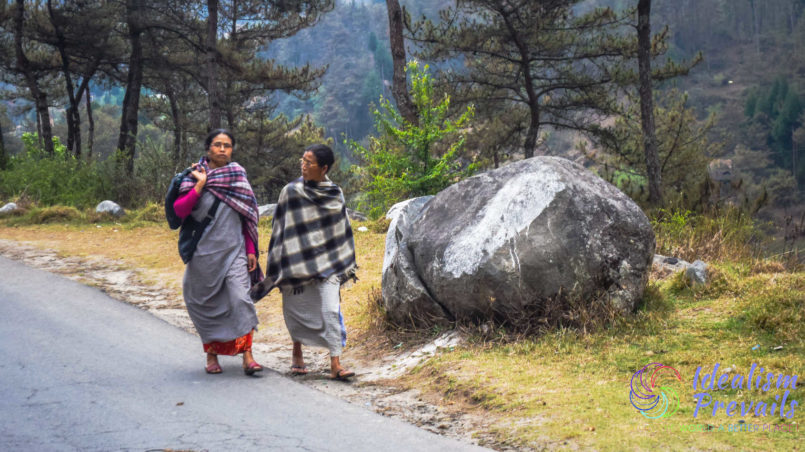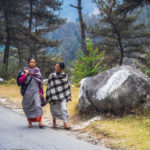The Khasi Tribe and Matrilineality

Have you ever come across any organisation founded by men with the goal of liberating men from female dominance and achieving equality for men with respect to women? I am sure to most people this would sound very weird, as all of us have always come across women’s organisations working to liberate women from male oppression.
But I came across such an organisation founded by men and it is named Syngkhong Rympei Thymmai (SRT). This organisation is formed by Khasi men in Meghalaya, to protect men’s rights and promote equality for men in Khasi societies in Meghalaya.
The state of Meghalaya is located in the northeast of India and consists of the Khasi, Garo and Jayantia hills. Meghalaya is the wettest region in India. In fact, it is claimed that Mawsynram, a village located in the Khasi hills, is the wettest place in the world. Khasi and Garo people are ancient tribes found in the Khasi and Garo hill regions respectively in Meghalaya.
In a matrilineal system, an individual is identified with his or her mother’s lineage and this can involve inheritance of property, titles, and surnames from mother to daughter. Another state in India other than Meghalaya where matrilineality is followed is Kerela.
However, all of us are more acquainted with patriarchy and the patrilineal kinship system. In a patrilineal kinship system, family membership is derived from the father’s lineage. Inheritance of property, surnames, and other family rights are derived from the father to the male kin. In fact, such a system of kinship is the most common to all of us, as most communities around the world follow the patrilineal system and thus patriarchy.
In Khasi societies, children take the surname of their mother and not the surname of their father. Moreover, the youngest daughter in the family inherits all the ancestral property. If a couple has no daughters, they adopt one and pass on their inheritance to her. This is really contrary to the general tradition, where sons usually inherit ancestral property.
Another interesting tradition is that, after marriage, a man leaves his paternal house and stays in his wife’s house with her family. Amongst Khasi and Garo tribes, after marriage, a man has to break ties with his own mother and start to live in his mother-in-law’s house. But this does not render him powerless, as a Khasi man is the head of his wife’s family as so far as his own children are concerned. In the case of divorce, the man has to leave his mother-in-law’s house and return to his biological mother’s house where he actually belongs. In the case of death of his biological mother, he can return to his youngest sister’s house as she has succeeded her mother’s position in the family. His children would remain with their mother as they belong to their mother’s clan.
Amongst Khasi, the inter-relationship between a mother and daughter is very important. And thus ancestral property is handed down from mother to daughter. The next important relationship is between sisters. A widowed mother always lives with her daughters rather than her sons in the Khasi and Garo tribes. The extended family usually consists of the mother, her married or unmarried daughters, unmarried sons and sons-in-law and grandchildren. Or in other words, descendants of the grandmother, along with the youngest daughter (who inherits all the ancestral property and the ancestral house) usually constitutes the family. The eldest living maternal uncle of the youngest daughter in the family wields immense influence since the youngest daughter in a family, who is the custodian of property, has to consult with him on all issues. This means that brothers and husbands are always out of the power equation in such a system. Moreover, in such a kinship system, the relation between husband and wife also falls into the background as regards inheritance or property-related decisions.
Members of the organisation I mentioned at the beginning of my article, i.e. SRT believe that in Khasi communities, the position of men is not equal to that of women, be it the brother or the husband. Due to such grievances, they founded the organisation and are trying to overthrow the matrilineal system in Meghalaya.
This is so because matrilineality does not necessarily mean prevalence of matriarchy in these societies. Matriarchy means a social system where females hold the primary power positions such as political leadership, control of property rights and enjoy social privileges to the exclusion of men. Matrilineality does empower women but even in these societies, the primary power might still reside with the men, though not in the way men enjoy power in the patriarchal system.
However, the traditions and respect given to women in such matrilineal communities can always set examples for men in patriarchal societies and be a reminder that gender roles and privileges that come with it are not natural but just social constructs.
Credits
| Image | Title | Author | License |
|---|---|---|---|
 |
00_The-Khasi-Tribe-and-Matrilineality_Nitin Bharadwaj | Nitin Bharadwaj | CC BY-SA 4.0 |
